If you don’t have access to any outdoor space, this doesn’t mean you can’t have a garden. Indoor organic gardening is a fast-growing trend with what is going on in the world.
Many plants can be successfully grown indoors, adding color and many other benefits to your home. Even for those who aren’t green thumbs.
I’ll take you through everything involved in bringing an outdoor garden indoors and how you can cultivate an indoor organic garden.
Indoor Organic Gardening Benefits
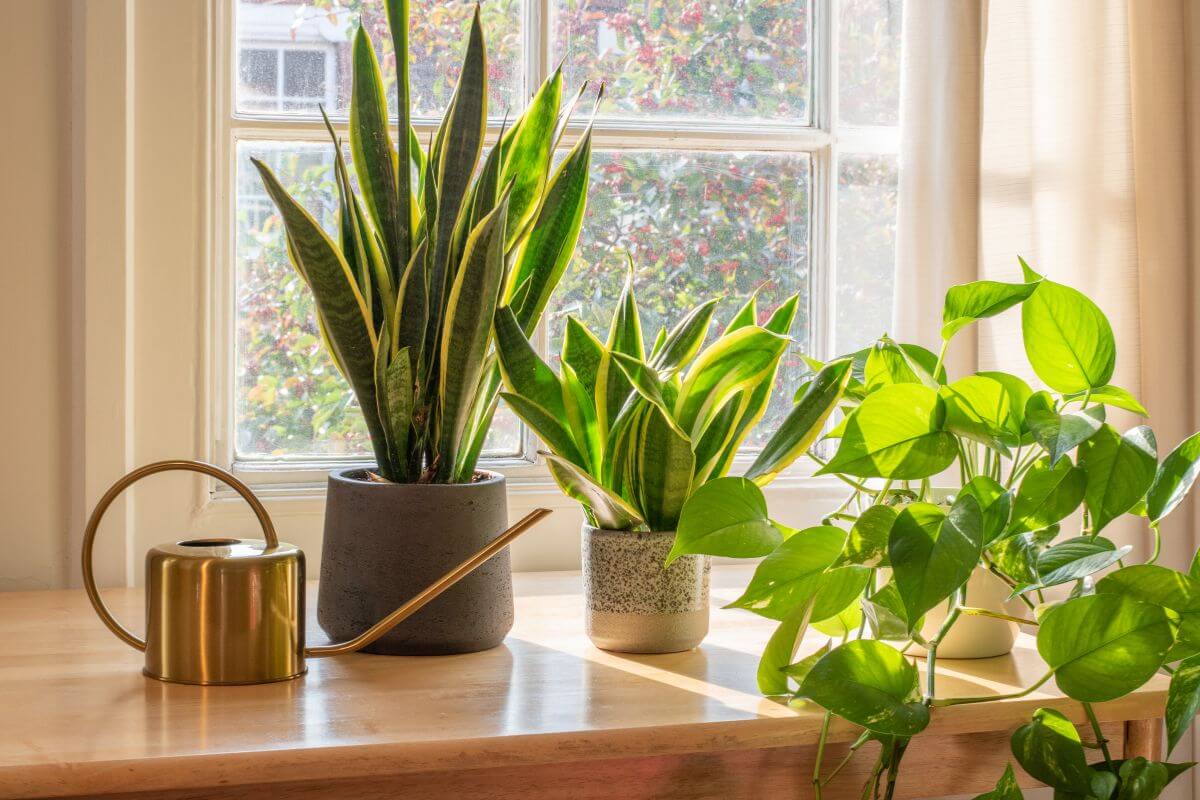
There are many benefits of gardening indoors. Houseplants can be beautiful decorations, but they can also improve your health.
Many plants, like spider plants and ferns, will actually help purify the air in your home. Not only do they exchange carbon dioxide for oxygen, they can actually remove toxins from the air.
Aloe Vera will even continue to produce oxygen at night, so it is a great plant to have in your bedroom.
A NASA study, published in 1989, discovered that indoor plants can actually scrub the air of volatile compounds, such as formaldehyde and benzene, that have been known to cause cancer.
As well as plants with air purifying qualities, you can grow edible plants inside too. Fresh herbs are a welcome addition to any dish. You could set up an indoor herb garden on your kitchen window sill.
You can build an indoor vegetable garden with your favorite vegetables, like radish or chili. Many vegetables come in miniature varieties, and organic seeds are available online.
- Read More: Organic Seeds Guide and Where to Buy Them
You can get miniature tomatoes, peppers, peas, and even fruit trees that will look beautiful and provide you with tasty treats year round.
Indoor Space Requirements
Do you live in a small city apartment? Don’t be put off by a lack of space just because you’re a city dweller.
You can choose what to grow depending on the space you have. Window sills are great spots for plants, but you could also consider hanging planters. Take advantage of the vertical space in your place.
Macramé is a fantastic way of holding plant pots and suspending them from the ceiling. There are many patterns online if you fancy having a go at making your own.
Planter shelves are also a good choice, as they have a small footprint and give you lots of room to fill them with plants.
If you don’t feel you can dedicate the wall space to a planter shelving unit, maybe try one as a room divider.
Taking this a step further, you could put up a trellis and grow a climbing plant like jasmine. Jasmine is great because they will fill your home with its wonderful aroma.
Even if you feel like you have no space for plants, there are ways of incorporating them into your home. Air plants don’t need any soil to grow and can be grown in frames hung on the wall!
Moss bathmats take up no room and are very practical, that feel great on your feet and absorb the water when getting out of the bath or shower.
Plant Containers and Pots
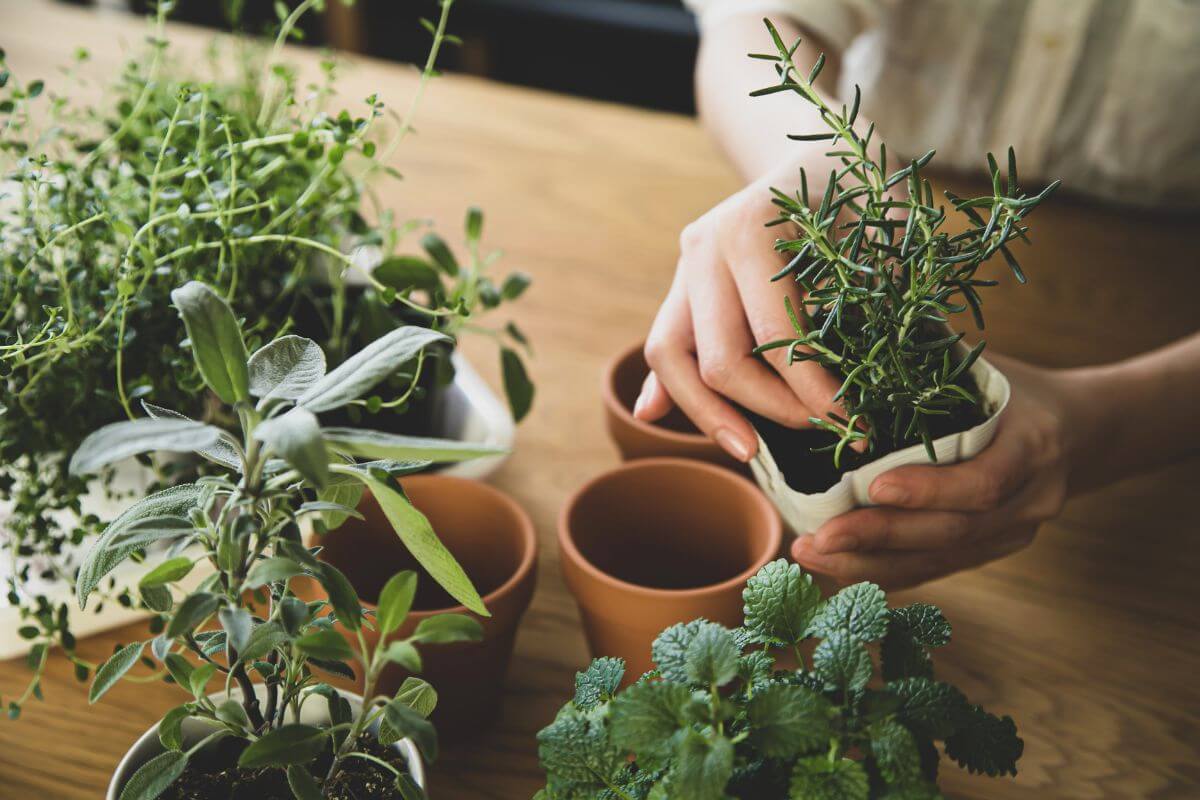
What type of plant container you use will depend on what you’re growing, and where. There are some beautiful plant pots available.
Be sure to use pots that have drain holes to allow excess water to drain properly. That will help to prevent root rot.
Remember to get plant saucer trays to put under your pots to allow the water to freely drain from the soil.
Many planter shelving units come with built-in plant trays. If you’re using hanging planters, put your plant in a smaller pot inside an outer one.
Put a few pebbles or some gravel in the bottom of the outer pot, so the inner pot does not sit directly in the water.
When you water your plants, put the water in the plant tray or outer pot. This will encourage your plants roots to grow down, as well as prevent the stem from rotting.
Unglazed terracotta pots are the best. They will absorb the water and bring it into the soil as well as letting in more oxygen to your plants roots.
Light Needs
Different plants have different light requirements. While some like a full sun with lots of direct light, others prefer shade and indirect light.
Before you start your indoor garden, consider the positioning of your plants. Decide where you want your plants to go, then get varieties that fit the space.
Plants like ferns and aloe vera like bright light, but don’t need the full sun. You can set the plants in front of a south-facing window.
Don’t be disheartened if you have a dark flat, or a dingy corner that you want to spruce up. Plenty of plants like the spider plant, snake plant, and lucky bamboo will grow with very little light. Cacti and succulents will love a sunny, warm windowsill with lots of natural light.
If it’s the winter and you have cold windows, move the plants a little further from the cold temperature.
There are plants that will be suited to every spot in your house, so rest assured that you will find ones that will thrive in your home.
You can use grow lights if you have plants that need additional light and you don’t have enough natural sunlight. Fluorescent lights may also work for those plants who need low to medium light.
Soil Preparation
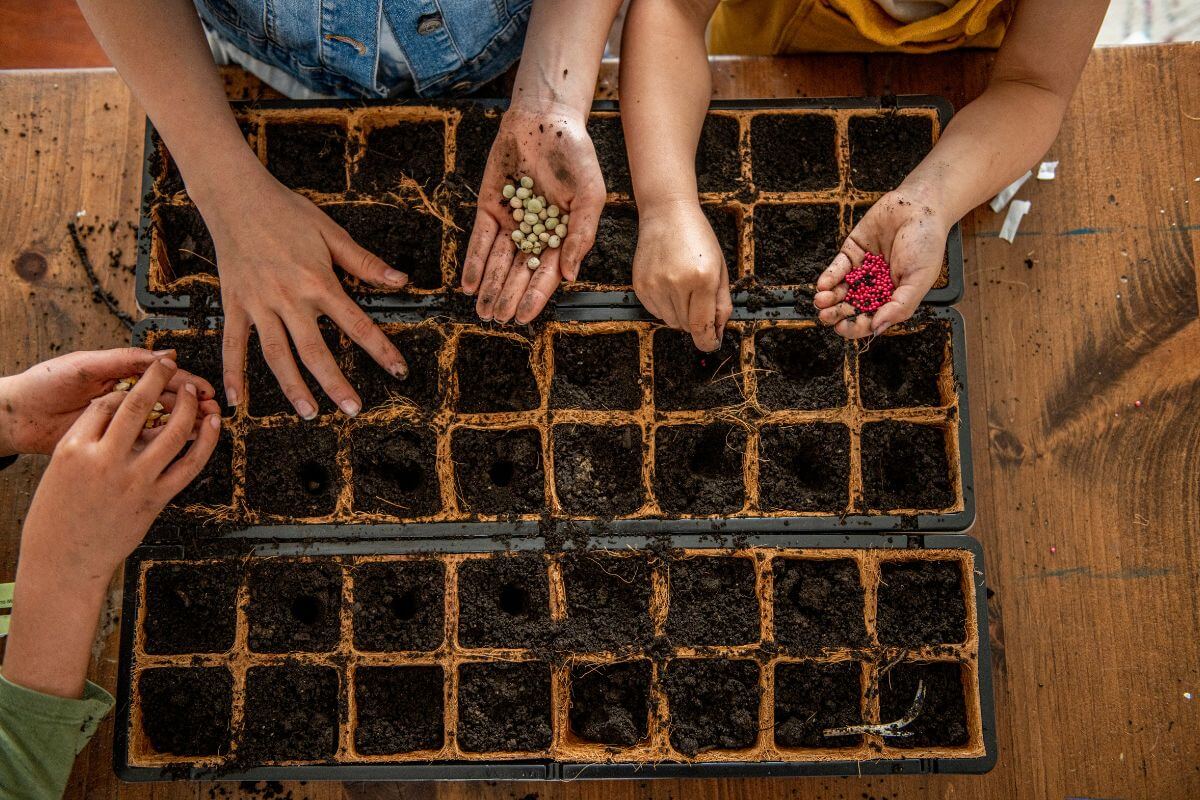
If you have an outdoor organic garden, then chances are that you are composting to add nutrients to the soil. A compost heap is one of the best things to have for sustainability.
You can also use the compost for your houseplants, but be prepared to see a few bugs and weeds – at least in the first month or so of bringing it indoors.
There are many soil amendments and soil conditioners that you can add to soil to help with soil structure. If you want to add fertilizer too, look for organic fertilizers to add to your potting soil.
There are even store bought organic soils that are specifically designed for each type of plant. So once you’ve decided on the plants you’re getting you can buy the soil that is right for them.
One of the best things about indoor organic gardening is no weeding!
If you have the space and want to try growing different herbs, try building a miniature herb spiral or pyramid. They enable you to grow herbs that have different soil and water preferences in the same space.
The pyramid shape will allow the excess water to feed the plants that have higher water requirements.
Plant herbs that like well drained soil, like thyme and rosemary, at the top. In the middle, grow sage, basil, or cilantro. At the bottom, put your herbs that like a good soak, like mint, parsley or chives.
- Related Articles: Organic Soil Guide
Temperature and Humidity
Temperature and humidity needs depends on the plant.
Tropical plants will love the humidity of your bathroom, whereas succulents and cacti will thrive on a sunny windowsill with lots of light and little water.
Thanks to central heating and air conditioning, the temperature of your house will remain pretty constant. At least, more so than outdoors.
Temperature control widens your options for growing plants. You may find you are able to have vegetables and herbs all year, instead of just the warmer months.
Water Requirements
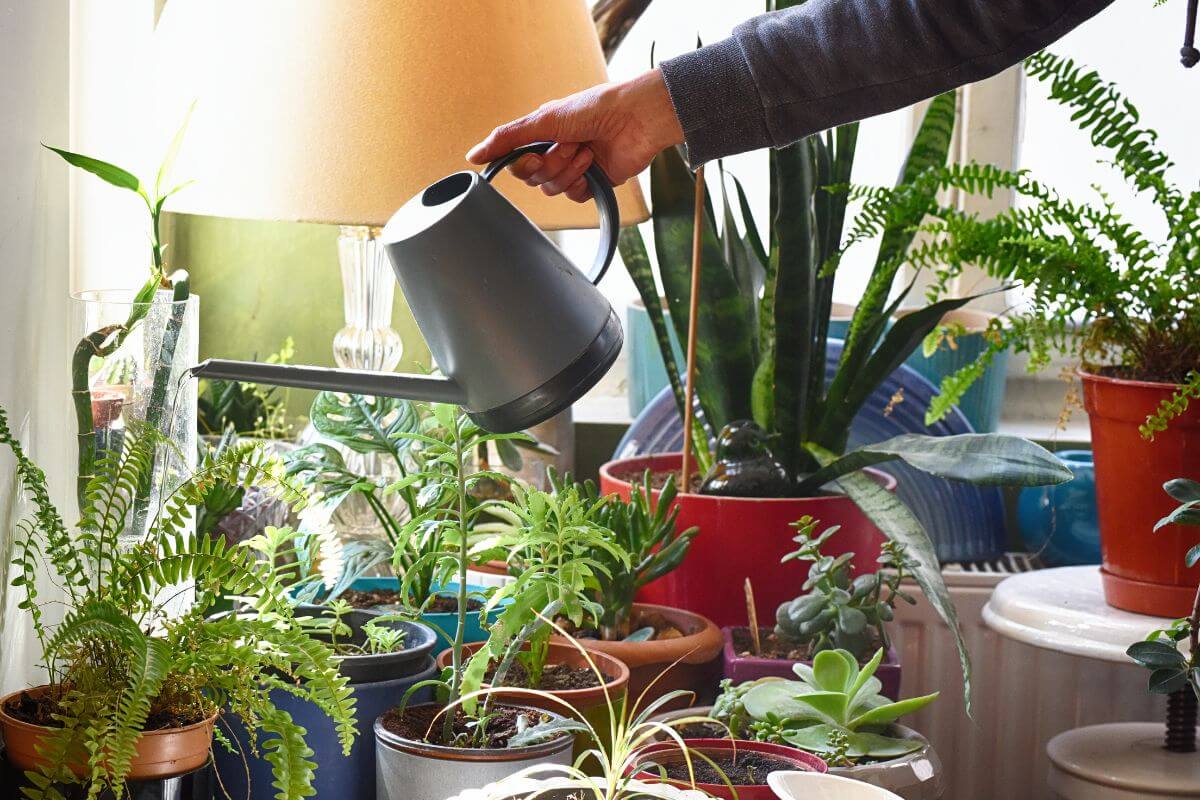
All plants like a different amount of water, so water based on the requirements of the plants you’re growing.
Rainwater really is the best for plants, but using tap water won’t cause any major problems. Remember, it doesn’t rain every day, and houseplants are more likely to die from over-watering than under-watering.
Generally, it’s better to give them a good soak once a week than to watering them every day.
To check if it’s time to water the plants, press your fingers into the soil. If it’s moist, you don’t need to water. If the soil is dry, then give them a drink.
Of course, there are exceptions to this rule. Some plants won’t even need to be watered once a week and will prosper in sandy, dry soil. If in doubt, put a bit of water in the plant tray and see if it’s absorbed by the plant roots.
Pest Control
Indoor pest control is definitely less hassle than outdoors, as there is less chance of an insect infestation in your home. This doesn’t mean it won’t happen though, so you should still keep an eye in case your plants show any signs of damage.
The good news is that you won’t have to worry about killing beneficial bugs alongside the pests, as it’s unlikely that predator bugs will make their way into your house.
If you do find pests, try soap spray for most things. Mix an organic liquid soap with water and put it in a spray bottle. You can add chili powder or pepper to the soapy water to increase its effectiveness. Spray onto aphids and spider mites, then wipe them off with a clean cloth.
Neem oil spray also gets rid of most bugs. Essential oils like lavender, rosemary, basil, mint, thyme and sage have also been known to repel bugs.
You can also try placing a clove of garlic in the soil of your houseplants. The garlic can act as a repellent for unwanted insects.
- Related Article: Organic Pest Control Guide
What Vegetables Can I Grow Indoors All Year Round?
You can grow almost any vegetable indoors, including tomatoes, carrots, lettuce, peas and green beans. In order to grow them, they need pretty much the same conditions as their outdoor counterparts.
The biggest challenges for vegetables are temperature and light levels, especially if you live in colder climates. Greenhouses are great to help manage light and temperature levels, but not all of us has the space for a greenhouse.
While indoors, you can replicate light and temperature with grow lights as an option. Grow tents can also help keep the heat in.
It’s also best not to use pesticides on your indoor garden, if possible. You don’t want pesticide levels to damage the beneficial organisms that provide nitrogen fixation or act as natural predators or pests of vegetable pests.
Popular vegetables that can be grown indoors are:
- Carrots
- Tomatoes
- Peppers
- Potatoes
- Green Onions / Scallions
- Herbs – Cilantro, Oregano, Chives, Parsley, Mint, Rosemary, and more
- Leafy Salad Greens
- Microgreens
- Radishes
- Kale
- Cauliflower
- Cabbage
- Broccoli
- Squash
Indoor Organic Garden Tips
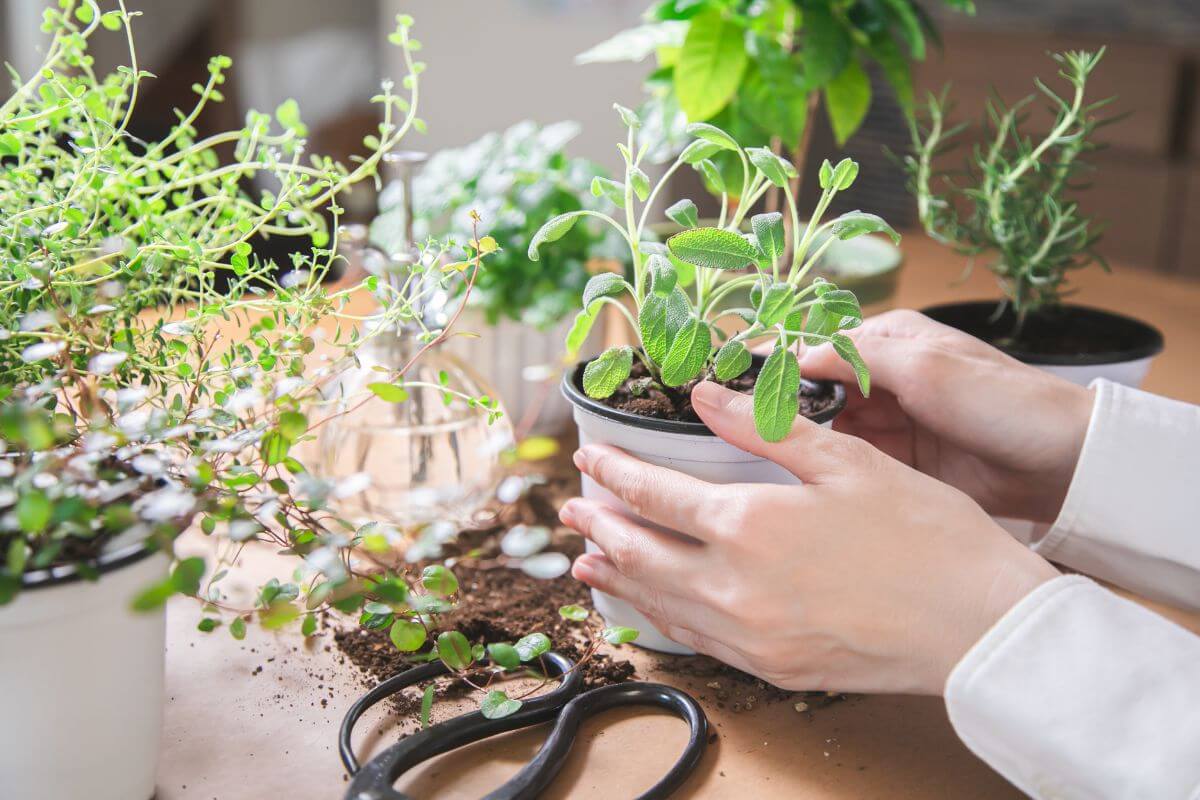
My top five tips for indoor organic gardening are:
- Don’t Overwater – Plant leaves will start to turn yellow if you overwater them, so be careful with using too much water. There is more chance of reviving a plant that has been under watered than saving one that had been overwatered.
- Dust the Plant Leaves – The leaves are a plant’s lungs and while outside they are constantly moving in the breeze, but when indoors, they will build up a layer of dust. You can use a damp cloth to dust the plant leaves. You can also give them a potassium boost by wiping them with the inside of a banana peel once in a while.
- Remember the Roots – You may be dusting the leaves of your houseplants, but what about the roots? About once a year you should remove the plant from the pot, trim the root ball and refresh the soil. If the roots are particularly pot-bound, then increase the size of the pot if you can. It’s better to do this in the winter when they are likely to be dormant.
- Keep an Eye on Them – Plants will tell you if they’re unhappy. If your plant doesn’t look like it should, then it’s trying to let you know what’s wrong. Be it too much or not enough light, if your plants look unhappy, don’t ignore it. The internet is a great resource for helping you find out how you can perk up specific plants.
- Talk to Your Plants – Ok, so this may seem a little cliché, but that doesn’t make it any less important. Just being around plants has been proven to be good for your mental health, and exchanging your exhaled carbon dioxide for oxygen is about as symbiotic as you can get!
How to Build an Indoor Garden Final Thoughts
Growing plants can be good for your mental and physical health. So if you don’t have access to an outdoor space, then consider becoming an indoor gardener.
Even if you do already have an outdoor garden, bringing plants inside will see you through those winter months when outdoor gardening is not on the agenda.
Indoor Organic Gardening FAQs
Can you grow organic vegetables indoors?
Yes, you can definitely grow organic vegetables indoors. There are even some people who have been successful growing their vegetables indoors for a whole year without ever going outside! Growing vegetables indoors requires following a different set of directions than the usual ones that come with quick, easy to pick up gardening books.
What is the best indoor gardening system?
The best indoor gardening systems are the AeroGarden and Click and Grow garden kits. They are self-contained gardens that will fit on most kitchen countertops for a real plant-to-plate experience with little hassle. They come with all the needed tools and accessories that you need too. Just add the seeds!
How do you grow indoor plants organically?
Indoor plants need just as much love and attention as any others. They require water, clean soil, and light just like their outdoor family members. The main difference between indoors and outdoors will be the availability of natural light, but you can use grow lights. To grow organically indoors, the main keys are to not use harmful chemical pesticides and fertilizers. Use organic materials in your soil and organic gardening methods all around.
Are indoor gardens healthy?
Whether indoor gardens are healthy depends on what you mean by “healthy.”
If you want to grow plants that are free of chemicals or pesticides, then yes, provided you’re growing organically. Indoor gardens are great way because they allow us to control the environment in which our plants grow. For example, if we live in an air-conditioned house and want food that doesn’t contain chemical fertilizers or insecticides, then be sure to grow organicallly.
If you think of “healthy” as meaning clean food and good nutrition, then organic gardening is always the best choice. There are no chemical fertilizers or pesticides used, and there’s nothing like the taste of fresh homegrown tomatoes!
What is the easiest fruit to grow indoors?
Strawberries are the easiest fruit to grow indoors for me. Strawberries have a shallow root and heavy-hitting root hairs that make it an easy plant for beginners. Place strawberry crowns in moist soil and they’re set!
What is the name for an indoor garden?
One might call an indoor garden a “conservatory.” It is often called this because the function of conservatories are similar to that of traditional gardens, with the exception that conservatories are used indoors. This indoor garden surrounds its plants in a protected environment, which includes humidity controls (humidifiers), heating lamps, drains, ventilation systems for air circulation and more to reproduce outdoor environment aspects.
Other names for “indoor gardens” that you may hear depending on where you live: houthouse, arboretum, glasshouse, nursery, and simply as “indoor garden.”









